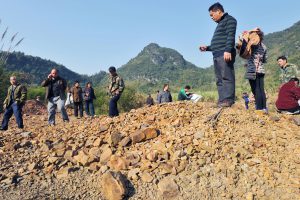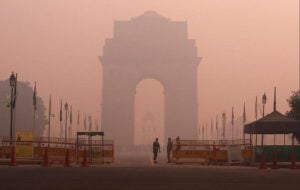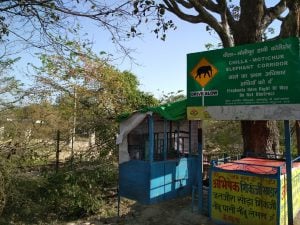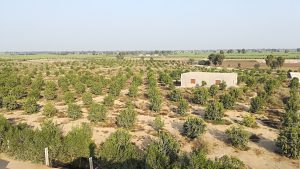Bhutan reinforced its 20-year old ban on plastics in April this year. First introduced on the 25th year of the reign of the fourth King of Bhutan, Jigme Singye Wangchuck, the ban has been only partially successful. Part of the reason is that it was never comprehensive, and did not apply to goods packaged in Bhutan, only for single use plastic bags. Even this was poorly implemented.
The new phase of implementation will penalise shopkeepers for offering plastic bags, but still allow plastic packaging for goods produced by small farmers and businesses. This may not be enough as plastic has penetrated deep into Bhutan’s ecosystem. A team of researchers, in an ongoing study, have found plastic for the first time in the faeces of the endangered black-necked cranes.
Black-necked cranes are classified as vulnerable and globally threatened, and they are also considered sacred in many communities along the Western Himalayan region, from China to India. This new discovery has raised new concerns on the health, safety and long-term survival of the endangered species.
The new discovery
The team that made the discovery comprised researchers from the Ugyen Wangchuck Institute of Conservation and Environmental Research (UWICER), the Royal Society for Protection of Nature (RSPN) and the Bumdeling Wildlife Sanctuary (BWS). They collected more than 1,000 samples of faeces in Bumdeling, one of the major wintering grounds for black-necked cranes in Bhutan.
The study is part of the Black-necked crane conservation project where RSPN, UWICER and BWS has tied up with the US-based International Crane Foundation (ICF).
Of the 95% of the samples that were analysed so far, researchers confirmed 5% had plastics in them. The analysis was carried out at Sherubtse College, Bhutan’s oldest and largest college located in eastern Bhutan, as well as at UWICER’s own laboratory in Bumthang.
The faeces are soaked in distilled water overnight and then placed on a petri dish where the samples are examined and segregated. A microscope is then used to examine the segregated contents and to take pictures.
The team came across 6.6 grams of plastics in one of the samples on 16 May and is finding more plastics as the study progresses.
Plastics everywhere – From the deepest ocean to the top of the Himalayas.
Not a good news – 6.6 gram plastics found in black-necked crane's (BNC) poop. We are analysing it's poop to determine foraging habits of BNC to help habitat enrichment programs. @rspnbhutan pic.twitter.com/oegi7YnmKE
— UWICER (@UWICER) May 16, 2019
“We found some more plastics today morning,” said Sherub from UWICER, one of Bhutan’s top ornithologist who is leading the team of researchers, on Tuesday.
He said that although Bhutan has strong environmental regulations, it has not taken the responsibility of disposing plastics properly and they have found their way into the black-necked cranes’ habitat.
While already facing several other challenges in terms of habitat degradation, plastics, which has been found for the first time in the crane’s faeces is expected to push the government to step up its conservation policies.
“They are not natural food, so it will definitely affect the health and long term survival of the endangered bird,” Sherub said.
Jigme Tshering, Deputy Chief of RSPN said the study was carried out to gain better understanding on the feeding habits of the cranes and to influence decisionmakers to come up with effective habitat management and conservation plans.
The team is also carrying out video recording of the cranes’ feeding habits to complement the faecal analysis study.
Changing ecosystem, changing diet
The primary diet of black-necked cranes consists of insects, plant fibres, tubers, weeds and domestic food crop grains. With more farmers giving up farming due to human wildlife conflict, and flashfloods washing away paddy fields Jigme Tshering said the availability of food for the cranes has been affected.
Karma Tempa, Chief of Bumdelling Wildlife Sanctuary said the birds roost in Bumdeling but they feed most of the time near the town, where there is a bigger waste problem.
Located in northeastern Bhutan, Bumdeling is a tiny town, one of eight village blocks in the district of Trashiyangtse. The last census, conducted in 2005, revealed that it had a population of only 2,695. It is an unlikely area to have much waste, plastic or otherwise, although eastern Bhutan has, historically, had less infrastructural development than western Bhutan.
Black-necked cranes winter in Bhutan after the harvest season and forage on paddy fields and potato farms. The study is also expected to influence policy makers to incentivise farming.
“We want to look into whether food grains constitute a major source of diet for the cranes and then suggest policy changes to encourage farming and harmonious living between the cranes and human beings,” said Sherub.
Black-necked cranes in Bhutan are admired and respected and throughout ages, they have inspired traditional music, songs, poems, and literature.
Last winter, Bhutan received more than 600 cranes. The cranes arrive around the third week of October and return to the Tibetan plateaus by the third week of December
![<p>Black necked cranes arrive in Phobjikha valley in central Bhutan [image courtesy: Royal Society for Protection of Nature]</p>](https://www.thethirdpole.net/content/uploads/2019/05/flight-1-300x199.jpg)




